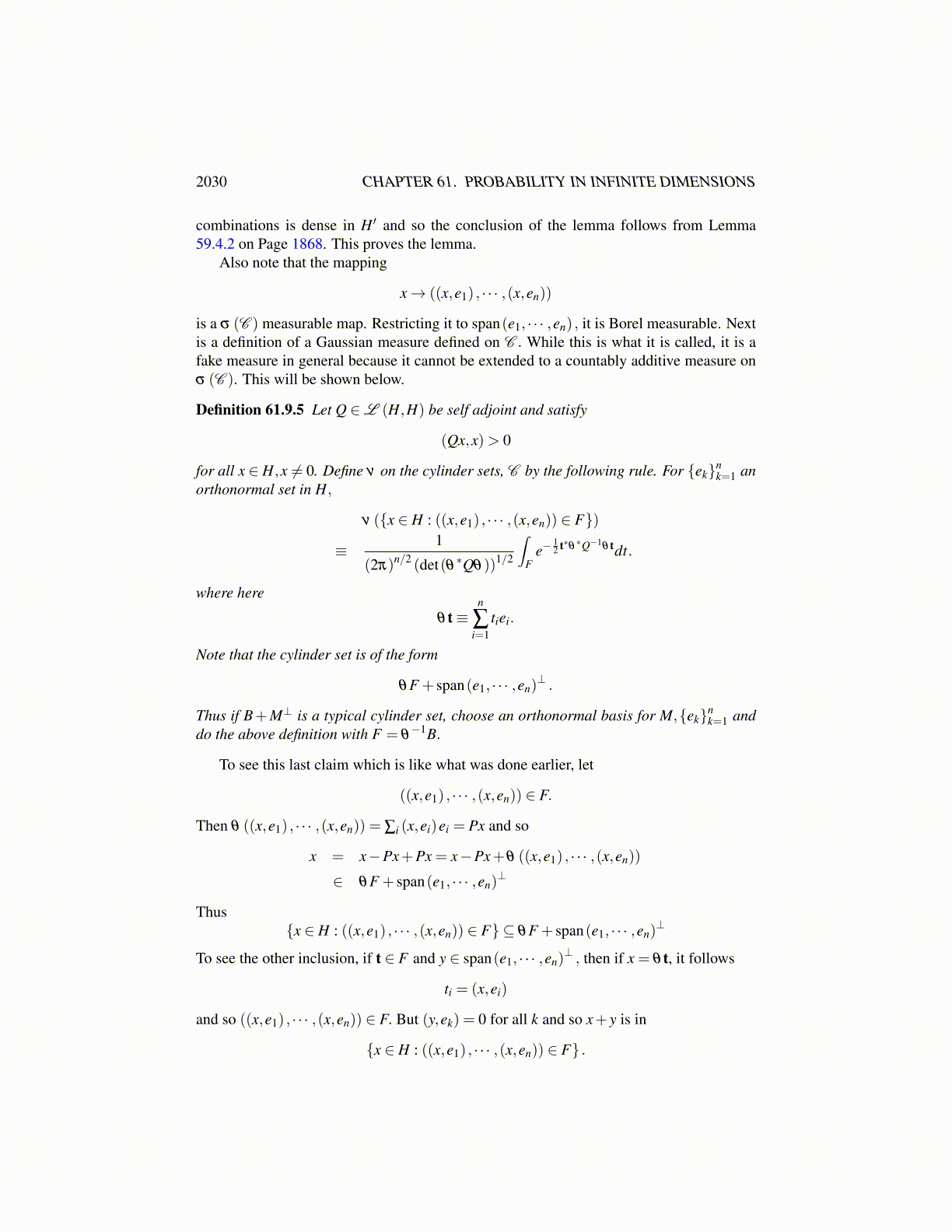
2030 CHAPTER 61. PROBABILITY IN INFINITE DIMENSIONS
Now consider the intersection of two of these cylinder sets. Let the cylinder sets be
{x ∈ H : ((x,e1) , · · · ,(x,en)) ∈ E} ,{x ∈ H : ((x, f1) , · · · ,(x, fm)) ∈ F}
The first of these equals
{x ∈ H : ((x,e1) , · · · ,(x,en) ,(x, f1) , · · · ,(x, fm)) ∈ E×Rm}
and the second equals
{x ∈ H : ((x,e1) , · · · ,(x,en) ,(x, f1) , · · · ,(x, fm)) ∈ Rn×F}
Therefore, their intersection equals
{x ∈ H : ((x,e1) , · · · ,(x,en) ,(x, f1) , · · · ,(x, fm))
∈ E×Rm∩Rn×F} ,
a cylinder set.Now it is clear the whole of H and /0 are cylinder sets given by
{x ∈ H : (e,x) ∈ R} , {x ∈ H : (e,x) ∈ /0}
respectively and so if C1,C2 are two cylinder sets,
C1 \C2 ≡C1∩CC2 ,
which was just shown to be a cylinder set. Hence
C1∪C2 =(CC
1 ∩CC2)C
,
a cylinder set. This proves the proposition.It is good to have a more geometrical description of cylinder sets. Letting A be a
cylinder set as just described, let P denote the orthogonal projection onto span(e1, · · · ,en) .Also let α : PH→ Rn be given by
α (x)≡ ((x,e1) , · · · ,(x,en)) .
This is continuous but might not be one to one if the ei are not a basis for example. Thenconsider α−1 (F) , those x ∈ PH such that
((x,e1) , · · · ,(x,en)) ∈ F.
For any x ∈ H,((I−P)x,ek) = 0
for each k and so
((x,e1) , · · · ,(x,en)) = ((Px,e1) , · · · ,(Px,en)) ∈ F